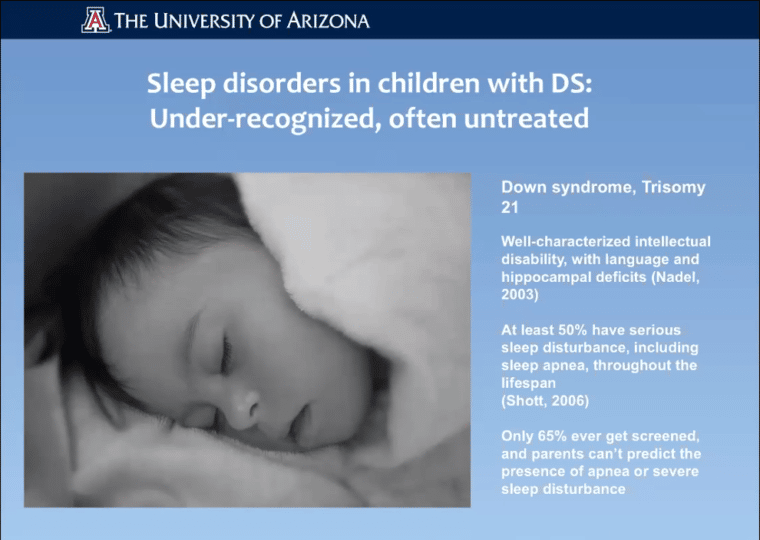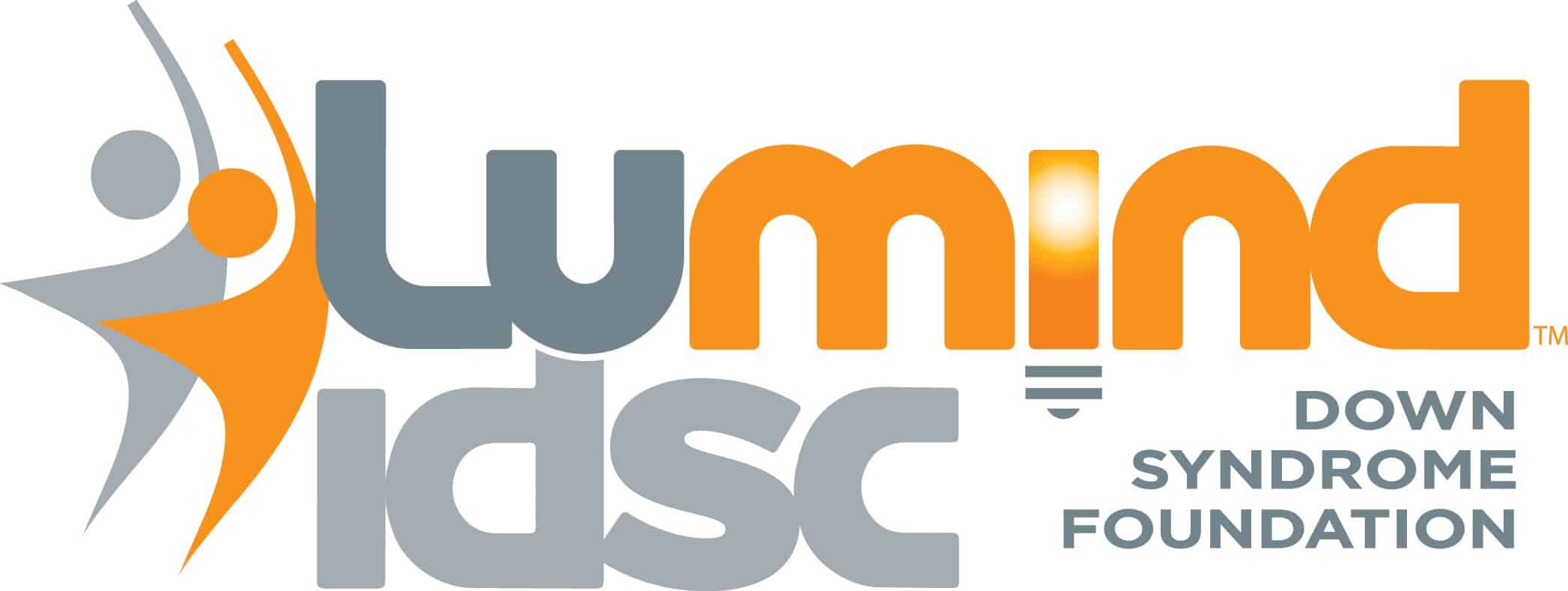According to Jamie Edgin, PhD, a researcher who studies sleep disorders and learning in DS, parents need to be aware of sleep problems in their children because, left untreated, they can be detrimental to cognitive development.

According to Jamie Edgin, PhD, a researcher who studies sleep disorders and learning in DS, parents need to be aware of sleep problems in their children because, left untreated, they can be detrimental to cognitive development.
Obstructive sleep apnea is common in DS. The airway collapses during slumber and stops the breathing. DS affects skull structure and muscle tone, which may explain the increased risk of apnea. Lacking oxygen, the individual wakes up and starts breathing again. When this happens repeatedly during the night, the person becomes deprived of deep sleep. This sleep stage plays an important role in long-term memory and learning.
The person with apnea may wake often, have night terrors, or sleepwalk, and be sleepy during the day. To properly diagnose apnea, the individual needs to have polysomnography (PSG) done at a sleep lab, where breathing, blood oxygen, and brain waves are measured through the night. The American Academy of Pediatrics suggests PSG screening at 4 years of age in DS.
To improve your child’s sleep study experience, Dr. Edgin says “be prepared.” Ask the lab to send electrodes and nasal canula (a thin tube) to your home so your child can practice using them. Bring favorite objects or activities to the appointment and let your child have agency during the study, for example by letting them help put the electrodes on. In explaining the study, “avoid overtalking,” she counsels. “Your child will pick up on your emotions if you are anxious.” A useful resource is the “Sleep Superhero” book, which you can request from Dr. Edgin by email (jedgin@email.arizona.edu).
If your child is diagnosed with apnea, “sleep hygiene is very important,” Edgin says. Some tips:
- avoid naps late in the day;
- plan to eat dinner before 6pm;
- do not allow caffeine or sugary drinks anywhere close to bedtime;
- confine stimulating activities to earlier in the bedtime routine and transition to calm activities;
- create a comfortable, relaxing sleep environment (dark, limit other activities);
- maintain a regular routine to provide the amount of sleep your child needs.
Additional treatment options include:
- surgery to remove adenoids and tonsils (70-75% effective);
- dental procedures (rapid maxillary expansion, mandibular advancement);
- noninvasive ventilation with CPAP or BiPAP;
- weight loss;
- change sleep positioning.



